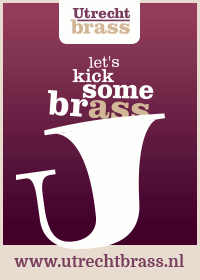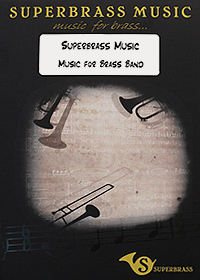Royal College of Music Brass Band & Brass Ensemble
2-Jun-2004Royal College of Music
Friday 21st May 2004
A Friday evening in central London may not be the ideal time or place for a concert including a major London premiere, but the respectably large audience which gathered at the Royal College of Music proved that there are those willing to make the effort to hear a rewarding programme of brass music. It certainly seems that the various colleges of music are at the forefront of adventurous programming in London at the present time, and Friday's concert was no exception.
The first half opened with "Sensemaya", written by the Mexican composer Silvestre Revueltas and arranged for band by Peter Bassano, for whom this was his swan-song after nearly 30 years teaching at the college, the last 10 or so being spent as Head of the Brass Faculty. From the outset one was struck by the pounding rhythmic figures, much of the music being in a steady 7/8 pulse. Once the basses and percussion had started things off, the solo Eb bass sang out a traditional native melody "Song to kill a snake"; the driving rhythms continued, punctuated by soaring melodic figures from baritones and horns, with the percussion playing an increasingly prominent role, culminating in a passage featuring the mallet instruments and various sizes of tam tam. After a moment's respite, the driving rhythms recommenced, but this time in a straight 3/4, until the piece ended abruptly, and all to soon.
Andrew Powell's "Concerto Melyn Coch" was commissioned by James Watson and the Parc & Dare Band, and received its first performance in Treorchy three years ago. Apparently when it was first suggested as a programme item the students were given the opportunity to look at the solo part to see if any of them fancied tackling it. There were some sighs of relief when Peter Bassano informed them that John Wallace had agreed to be the soloist for the evening, as it is indeed a tour de force, involving both Bb and Eb trumpets, as well as flugel horn.
Although much of Andrew Powell's activities have been in the realm of rock and music for film and television, he is no stranger to brass, having written a number of pieces for brass quintet, and his "Falstaff Theme and Episodes" was premiered by the Grimethorpe Colliery Band. The concerto opened with constantly changing combinations of 2s and 3s, drawing comparisons with the Revueltas, although at a considerably faster tempo. The solo part is very wide-ranging and calls for considerable agility from the soloist. Switching to the Eb trumpet a more tranquil episode was accompanied by the distinctive sound of the vibraphone. Further rhythmic patterns were set up by the band as the soloist seemed to extemporise over the top, struggling at times to be heard, but that may have been the intention, as the accompaniment picked up and echoed snippets of the solo line.
The second movement opened with the soloist on flugel, unaccompanied and starting in his very lowest register, before being joined by the band with a largely chordal accompaniment with echoes of the big band era, playing harmonies that would not have been out of place in late Ellington or Stan Kenton. Other effects used included the vibraphone being played with a violin bow, and tremolos and muted figures across the band. The drum kit was placed in the middle of the band, directly in front of the conductor, and his role became more prominent, building up from a persistent beat on the cymbal, before the soloist closed the movement.
Percussion was prominent once more at the start of the third movement, with marimba figures and drum rhythms underpinning the soloist, and quiet chords from muted horns, baritones and euphoniums. The solo muted tuba was joined in an effective duet by the soloist, also muted, before a cadenza that proved a master class in playing with a mute. It seemed that every possible
combination was used – open/closed, loud/soft, bending notes – before the jazz rock rhythms took over and drove the music to a thrilling climax. It was certainly a fresh experience - perhaps not a work for the faint-hearted, but one that would definitely reward repeated listening.
Following an interval, most of which was taken up with manoeuvring the various percussion equipment on the stage, the RCM Brass Ensemble took their place, trombones and tuba in front, four french horns behind, then the four percussionists, with three trumpeters on the staging toward the back of the platform. Benjamin Britten's "Russian Funeral", although premiered in 1936, was then forgotten until its revival in 1980 by the Philip Jones Brass Ensemble. A very dark work, as befits the subject matter, it includes a Russian funeral song which is also used in Shostakovich's "Eleventh Symphony".
Commencing with the trombones and tuba, the tuning was a little insecure, as the phrases passed from one player to the next. There is a magical moment when the four horns enter in unison, playing the funeral song, as the trumpets bounce phrases from one to the other. On this occasion it seemed a curiously lightweight performance and the players did not seem entirely comfortable, especially the trumpets. Possibly due in part to their location on the platform, their entries seemed to lack confidence, and the slow speed chosen meant all the players had to work very hard to sustain the sound and maintain its intensity.
Two works by Edward Gregson concluded the programme, from opposite ends of his writing career. He wrote "Prelude and Capriccio" as a 16 year-old student, revising it for publication some ten years later in 1972. The soloist chosen was Craig Bennett, who plays soprano cornet with Zone One Brass. Notable at the start was the warmth of the accompaniment – perhaps the first opportunity thus far for a more "traditional" brass band sound, as the melissima phrases echoed the soloist. There was a hiccup at one stage, when Craig entered too early but he recovered very well, with no lasting ill effects. The cadenza was most effective, initially over a quiet chord in the trombones, and then unaccompanied. In the introduction, Peter Bassano had drawn the comparison between the 7/8 passage which followed and that which is found in Shostakovich's "Second Piano Concerto", one of Gregson's early influences. Craig played with a clear, pure tone and his rendition was well received by the audience.
The final item "The Trumpets of the Angels" was to be conducted by the composer himself, and he introduced it, explaining how he had wanted to combine the sound of brass band with other musical elements, hence the inclusion of seven solo trumpets and a prominent part for organ. Based on a work originally written for the BBC Philharmonic Orchestra and the Huddersfield Choral Society, the present version was prepared a the request of Nicholas Childs and the Fodens (Courtois) Band for their centenary concert in 2000.
There is a strong spatial element to the work, with four of the trumpets on-stage and three off, although on this occasion two of the "off-stage" trumpets were on the platform, but right at the back, whilst the seventh, with the most extended part, was in the gallery behind the audience. In addition to the location of the trumpets, the horns and baritones were situated off-stage, and it was they who opened the piece with a strong unison phrase. Unfortunately the intonation again left much to be desired, but it should be remembered that most of those playing are primarily French horn students, and so not on their first choice of instrument. With a stroke from the tam tam and a chord from the trombones the first of the trumpets entered. The four players standing immediately behind the band each played their cadenzas in turn, punctuated by percussion, chords from the band and the off-stage horns and baritones.
The organ entered with some powerful writing followed by a much more delicate melody against hushed sustained chords. Phrases from the trumpets were answered by the cornets in the band, rising in intensity, before the horns and baritones reprised their opening call, but this time from the edge of the stage. First tuba then euphonium played solos with backing from the trombones as the tension built up, and the seventh trumpet burst forth, initially set against the full band sound. The solo part presents considerable challenges, and it fell to 24 year-old Jamie Winter to negotiate its pitfalls, including a striking four note phrase ranging over three octaves. Each note was perfectly centred and beautifully clear and the effect was stunning.
Two sets of timpani were placed antiphonally on the stage and they pounded out their rhythm, as scales, stating in the basses, thundered upwards through the band. The four trumpets had resumed their places in the solo cornet seats and the work ended in a powerful finale, with a very full sound, still punctuated by interjections from the remaining soloists. At the end, the audience, which included many who are not particularly brass enthusiasts, acclaimed composer, band and soloists alike, knowing that they had shared in a remarkable musical experience.
To close the proceedings, and to mark the end of Peter Bassano's reign at the Royal College of Music, the students, none of whom had been born when he first took up his post as Professor of Trombone and Sackbut, presented him with a bottle of wine – not 1975, which the wine merchant assured them had been a bad year for that particular wine, but the following year, 1976.
It is to be hoped that his successor will continue the good work in giving such opportunities for students to play, and audiences to hear, such fine brass music. One was also reminded what a shame it is that Professor Gregson's offer of a contesting version of "The Trumpets of the Angels" has not yet been taken up.
Peter Bale









